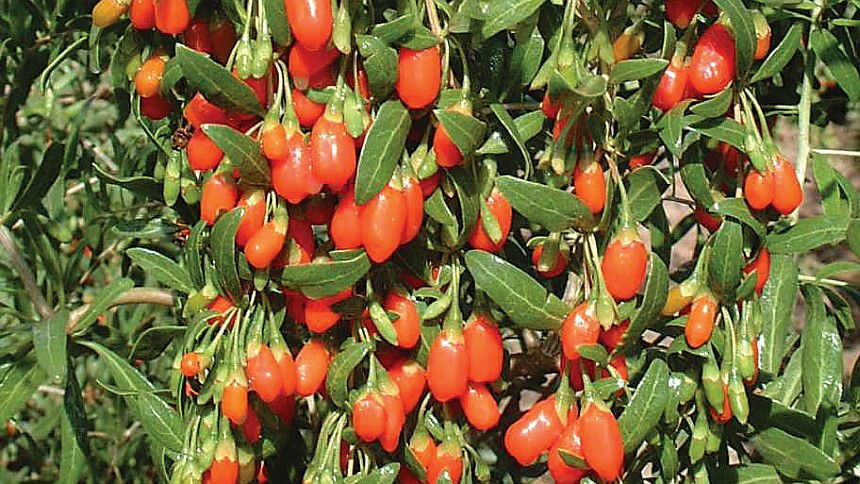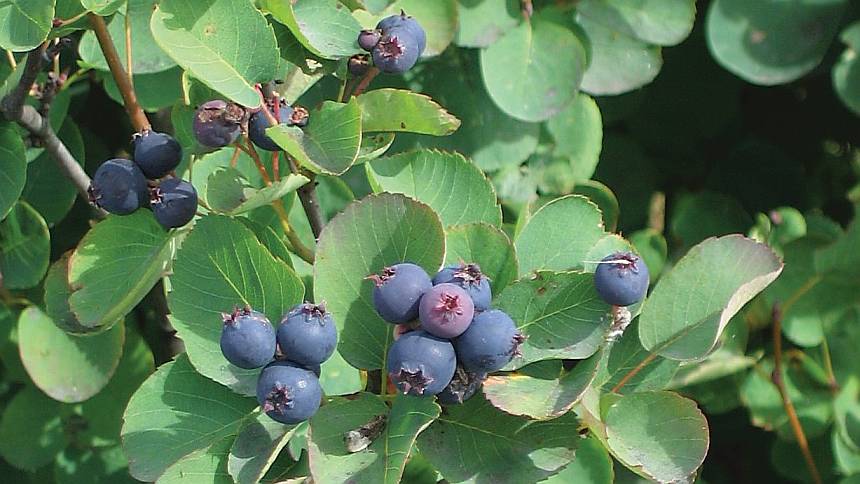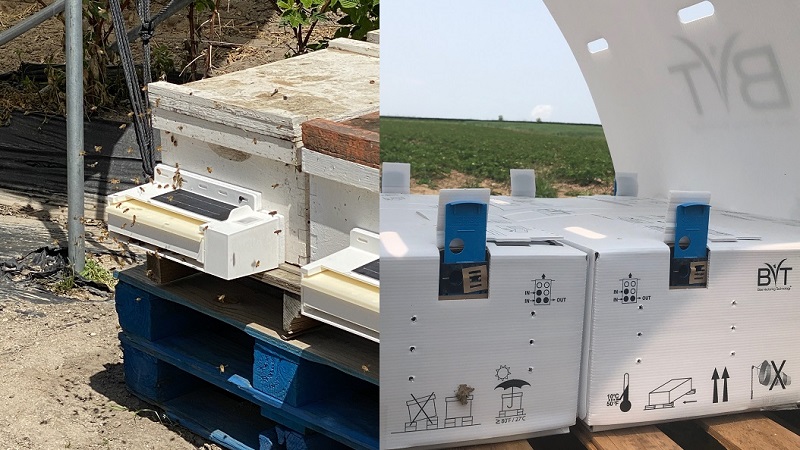Growers Try Their Hand At Next Wave Of Berry Crops
Ever heard of a goji berry? What about a Saskatoon or an aronia berry? These might sound new but growers in the U.S. are trying their hand at growing these berries. They are favored for their ‘nutraceutical’ value, or health profile, and with these unusual plantings growers are finding great market potential.

Goji Berries (Photo Credit, Wikimedia Commons)
GOJI: A CHALLENGING BERRY
Goji berries are actually a popular crop in China, where the majority of the world’s plantings are found. They’ve proven to be tricky in the U.S., with some climates considered unsuitable for these berries.
Goji are pesky and sensitive, says Kenny Demcik of LGD Farms in Spanish Springs, NV. Roots can grow 15 feet down, searching for water and minerals. Some plants will produce, some won’t. Some only produce leaves, which can be used in a goji tea. They take about 5-7 years to get into full maturity.
“They are more intense than grapes. If the climate isn’t perfect, you might not harvest. If the watering is not perfect, you might not harvest,” he says.
Demcik also says hand harvesting is a must. The skin on goji berries is very easily bruised and should be picked early in the day, when it is cooler.
“Any machine picking could cause a large loss since the berries drop and move around,” he says.

Aronia Berries (Photo credit: Wikimedia Commons)
ARONIA: AN EASY KEEPER
When compared with goji berries, aronia berries seem like a piece of cake to grow.
“It really likes long, hard winters and it grows in almost any soil type. It is relatively pH tolerant,” says Bill O’Brien of Bellbrook Berry Farm in Brooklyn, WI.
O’Brien says the berry plants do well with and without an irrigation and fertilization plan. Weeding, though, is vital for these plants.
“You don’t want competition with the weeds, that is one of your biggest issues,” he says.
SASKATOON: A POME BERRY?
Saskatoon berries go by several names and they are actually a distant relative of pome fruit. These native plants are also hardy, although they too can be susceptible to early competition from weeds and take a while to get into full production.
“Once you get them past that second year, they’re pretty hardy, because the canopy starts to shade the root system,” Jim Dixon of the Saskatoon Berry Patch in Williamsburg, MI, says.

Saskatoon Berries (Photo credit: Wikimedia Commons)
Proper pruning can help keep these berries in check.
“They will actually grow too large, becoming tree-like without proper cultural practices,” says Duke Elsner, a small fruit educator with Michigan State University (MSU).
Saskatoon berries are prone to cedar apple rust. Berries of infected canes will turn bright orange. Researchers at MSU have worked on some timing of fungicide sprays. Good nutrition is also key.
“They like nitrogen. You can really put the nitrogen to them and they’ll get lots of good growth,” says AJ MacArthur of AJ’s Berry Farm in Lachine, MI.










